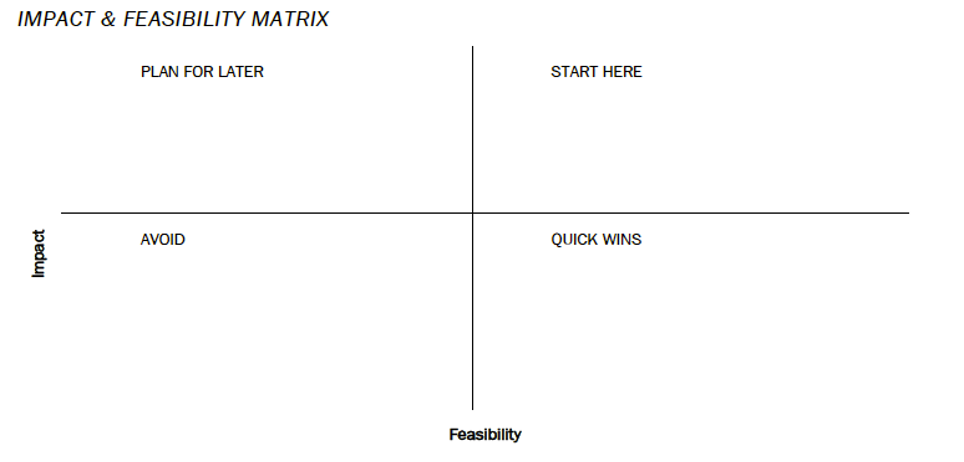How to Build and Prioritize Agentic AI Use Cases
Companies advancing their AI maturity drive better, measurable results by proving one agent can finish a job under guardrails than by mapping twenty ideas. Teams that get to production start with a straightforward, revenue-critical workflow, define success in numbers (task success, latency, intervention, cost/task), and wire policy into code before any real users touch it. That pattern—plus a paved path to deploy and roll back—turns pilots into production.
Once that first slice works, opportunities for agentic AI naturally emerge across operations. Agents aren’t a silver bullet—they’re a durable way to automate cross‑system work when actions are explicit, policies are clear, and observability is in place.
Agentic AI solutions enable companies to go beyond simple macros or chat widgets. With retrieval against approved sources and a small set of bounded actions, agents can reason through routine work, escalate when uncertain, and leave a trace your auditors can understand.
Key Agentic AI Use Cases
Human Resources (HR)
What agentic AI it does for HR: Pre-screens candidates, drafts outreach, and schedules interviews
Measurable outcomes HR can expect: Recruiters spend more time with finalists, not busywork
Example: Agentic AI in action for HR. The agent scans applications, flags top matches, sends a friendly scheduling link, and logs everything in your ATS
Finance
What agentic AI it does for Finance: Classifies invoice disputes, gathers missing fields, and routes tickets
Measurable outcomes Finance can expect: Fewer handoffs and faster resolution without touching core ERP logic
Example: Agentic AI in action for Finance. When it detects “duplicate charge,” the agent attaches the last two invoices, adds a short note, and routes to billing—flagging edge cases for human review
Customer Service
What agentic AI it does for Customer Service: Creates post-call summaries, tags dispositions, and suggests next steps
Measurable outcomes Customer Service can expect: Clear summaries supervisors trust, quick responses, and predictable cost per interaction
Example: Agentic AI in action for Customer Service. After a password-reset call, the agent files a two-sentence summary, adds the right disposition code, and suggests a follow-up SMS template a supervisor can approve with one click
Marketing
What agentic AI it does for Marketing: Routes content for review, checks brand/claims, and organizes campaign assets
Measurable outcomes Marketing can expect: Fewer last-minute edits and faster approvals
Example: Agentic AI in action for Marketing. The agent checks a landing page against brand rules, flags risky language, and reminds the owner to attach required disclosures
Supply Chain & Ops
What agentic AI it does for Supply Chain & Ops: Normalizes vendor data, flags exceptions, and coordinates handoffs
Measurable outcomes Supply Chain & Ops can expect: Cleaner data and fewer “where is this now?” emails
Example: Agentic AI in action for Supply Chain & Ops. The agent notices a delivery delay, alerts the planner, and creates a mitigation task with supplier notes attached
How to Build an Agentic AI Use Case
To successfully adopt agentic AI and scale an AI program, you need business use cases that win over stakeholders. The most compelling use cases balance strategic and financial impact with feasibility.
Impactful agentic AI use cases generate business value by growing revenue, controlling costs, and increasing efficiency. For example, customer service use cases can show positive ROI and higher profitability by improving acquisition and retention and building loyalty.
Evaluate feasibility by assessing data availability and quality, technical complexity, and resource requirements. Use cases that rely on readily available data and modest technical support are more feasible.
Process: First, gather candidate use cases from across business units. Next, evaluate each against impact and feasibility. Then prioritize a short list and select a starter use case. Finally, develop the implementation plan—which may involve coordinating multiple agents.
Ready to Build an Agentic AI Use Case? Here’s Your Checklist:
Write a one-page Use-Case Charter (users, owner, guardrails, rollback)
List 3–7 allowed actions with the required fields for each
Set up retrieval over approved documents and version your prompts
Encode policy-as-code (privacy, allowed actions) and log every step
Review 10 finished tasks together on Mondays; ship small tweaks mid-week; decide expand/hold on Fridays
Rehearse a one-click rollback before anyone outside the development team uses it
How to Prioritize Agentic AI Use Cases
A use case prioritization matrix helps cross-functional teams decide how to sequence agentic AI investments. Typically, a business owner/product lead, domain lead, and data/AI lead—with input from Finance and Risk/Compliance—score each candidate on impact and feasibility (1–5). Plotting those scores on a 2×2 grid surfaces quick wins and informs the proposal that a portfolio/steering committee approves.
Use a simple impact × feasibility grid:
Impact: Volume, cost per task, and risk reduction.
Feasibility: Data access speed, API coverage, clarity of policies, and change appetite.
High impact/High feasibility use case would be undertaken first. These use cases show great business value and ease of execution. High Impact/Low Feasibility projects can be planned for later.
Low Impact/High Feasibility projects use cases have the potential for quick wins, while Low Impact/Low Feasibility use cases should be avoided.
When companies prioritize agentic AI use cases with high business value and feasibility, they have a better chance of successfully raising their AI maturity.
Three green lights before you start:
Actions and required fields can be listed today.
A single place exists to review and roll back actions.
One owner holds outcome and on-call.
Uncover and Realize Opportunities for Agentic AI
Pick one narrowly scoped workflow with a clear finish line and 3–5 actions. Use a baseline test set to measure before/after. Build it once and reuse the pattern across teams.
Start with a single, end-to-end workflow that has a clear outcome and a concise set of steps. Prepare a reference set of tasks to test before and after. Build once; replicate across teams.
30-Day Thin-Slice Plan
Days 1–3 — Charter & scope: Pick one workflow; write the charter; capture a simple baseline
Days 4–10 — Data & tools: Wire retrieval to approved docs; define 3–7 actions with clear fields; turn on logging and policy checks
Days 11–20 — Build & harness: Implement the planner and actions; assemble a golden set; test changes in a safe environment; watch traces
Days 21–30 — Launch small: Shadow or blue/green with a small audience; review results daily; decide keep/kill/iterate; template what worked
IBM watsonx in the Stack
watsonx.ai: Experiment safely, track prompt/model versions, and keep results tied to changes
watsonx.data: Provide governed access to approved sources so agents retrieve the right facts
watsonx.governance: Turn policies into code, record approvals, and keep a reliable audit trail
Common AI Agent Blockers and How to Avoid Them
Endless planning: Cap steps and escalate early when stuck
Made-up actions: Keep a strict allow-list and deny by default
Brittle prompts: Version prompts and test before shipping changes
Silent failures: Trace every action and alert on no-ops or retries
Quiet lock-in: Keep planning/orchestration portable; test a small model swap quarterly
VEscape Labs is Your Partner for AGENTIC AI
We put people and outcomes first. Our cross-functional squads build alongside your team, staffed by senior nearshore talent in Mexico for same time zone collaboration, faster iteration, and lower total cost. Building together means we transfer know-how as we deliver. Your team leaves with working software, reusable patterns, and the skills to extend them.
We’re vendor smart: we use IBM watsonx when it advances the goal, or the right alternative when it doesn't, so you avoid lock-in, control spend, and integrate cleanly with your stack. We bake safety into the work itself: policies, evaluations, and guardrails land as code with dashboards and runbooks, giving you auditability, RBAC, and a clear rollback path, not more committees.
From day one, we measure what matters (task success rate, latency, human intervention rate, cost per task) and engineer a paved path to production so pilots become durable services. The result is the capability on your side and the business impact you can measure quickly.
Want to uncover agentic AI use cases and bring them to life?
Reach out to VEscape Labs today to get started. Book a 45‑minute AI Strategy Session.
Email: info@vescapelabs.com


